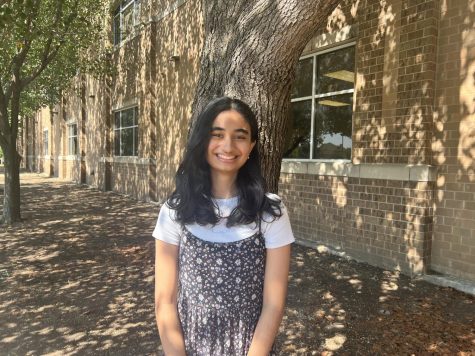Art I students design illusions of space
With only paper, a pencil, and their imagination, Art I students are creating illusions of space through the one and two-point perspective drawing technique. “It can bring a sense of realism into the artwork, if that is what you are going for, and makes all the components in the artwork cohesive,” student Shriya Vedula said.
February 11, 2021
Representing space in art, Art I students are learning how to use one point and two point perspective in a current project.
“It’s basically when you’re looking at something and you’ve got something, it could be a building, it could be an object, and it makes it look like it’s got depth, and it’s kind of moving away from you,” art teacher Jeb Matulich said.“It’s kind of a way that we can represent space in art work.”
Learning to draw with one and two point perspective is important when creating artwork based on real life according to freshman Shriya Vedula.
“I strongly believe that in order to create landscapes or artwork based on real life, learning how to draw with one point and two point perspective is greatly beneficial,” Vedula said. “It can bring a sense of realism into the artwork, if that is what you are going for, and makes all the components in the artwork cohesive.”
For Matulich, learning one and two-point perspective is important as it gives depth to the artwork.
“I think it’s an important skill to learn because it allows students to learn how to create depth and space in their artwork,” Matulich said. “So if you are working on a flat sheet of paper, proper perspective techniques are going to add that space and depth to make it look more realistic”
For junior Shriya Senapathi, the two point perspective component is preferred.
“My favorite project is the Modern Home two point perspective because I really enjoyed interior-point perspective drawings,” Senapathi said. “I liked it more than the one point perspective simple drawings we had practiced earlier in class.”
Using the different perspectives is about more than just art, which is what was the most challenging part for sophomore Riley Opiela.
“I think the most difficult thing about perspective art is the math or logic aspect of it,” Opiela said. “There is a right and wrong so if certain lines aren’t drawn correctly it can completely throw off the buildings shape so it’s important to get everything right or else your building can turn out a little funky.”
But despite challenges, Opiela likes how the project provides skills that can be applicable to everyday life and careers.
“I think the most rewarding thing about learning this is that it really can be applicable to everyday life and careers,” Opiela said. “So it feels like I’m learning something that’s worth to learn!”







